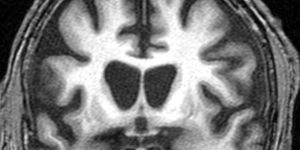Learning More About Protein Interactions Through Bacteria
Proteins are often studied within a small context, such as their behavior within a pathway or behavior under specific conditions. But within a cell is a web of interactions, animated below, and proteins can interact with each other in a multitude of ways. Knowledge of these interactions will be necessary to fully understand the mechanisms underlying many diseases. Using conventional techniques however, it’s sometimes difficult to understand all of the details in protein interactions. New work from Simone Marsili and David Juan, working on Alfonso Valencia's team at the Centro Nacional de Investigaciones (CNIO), have demonstrated that there is a lot to be learned about protein interactions through the evolution of their bacterial counterparts.
Juan Rodríguez, of the Structural Computational Biology Group at CNIO and first author of the new Proceedings of the National Academy of Sciences report, explained that "the complexity of human beings does not only result from the number of proteins that we have, but primarily from how they interact with each other. However, out of 200,000 protein-protein interactions estimated, only a few thousand have been characterized at the molecular level." While it is possible to determine whether or not proteins interact, and there are many ways to do that, determing the molecular characteristics of interactions is challenging without solid structural information about the molecules, which is not always available. CNIO researchers have now found another way to explore protein relationships.
"We have used the protein coevolution phenomenon: proteins that interact tend to experience coordinated evolutionary changes that maintain the interaction despite the accumulation of mutations over time," explained Juan. While there are roughly 3,000 million years of evolution separating bacteria from humans, the researchers at CINO took the data gathered about thousands of bacterial sequences to predict how proteins interact in humans.
"We have demonstrated that we can use this phenomenon to detect molecular details of interactions in humans that we share with very distant species. What is most interesting is that this allows us to transfer information from bacteria in order to study interactions in humans that we knew almost nothing about," commented Marsili.
"A deeper understanding of these interactions opens the door to the modeling of three-dimensional structures that may help us to design drugs targeting important interactions in various types of cancer," said Juan. "This knowledge can also improve our predictions of the effects of various mutations linked to tumor development," commented Rodríguez.
The researcher’s field, protein coevolution, has made significant strides in recent times. "Thanks to the amount of biological data that is being generated today, we can use new computational methods that take into account a greater number of factors," said Valencia. Computing techniques are enabling the use of very complex statistical models to get a better view of the cellular network as a whole, which the researchers note is "something particularly important in multifactorial diseases, such as cancer."
If you would like to know more about conventional methods of studying protein structure, and the evolution of proteins, check out the video above from the Broad Institute.
Sources: AAAS/Eurekalert! via CINO, PNAS








